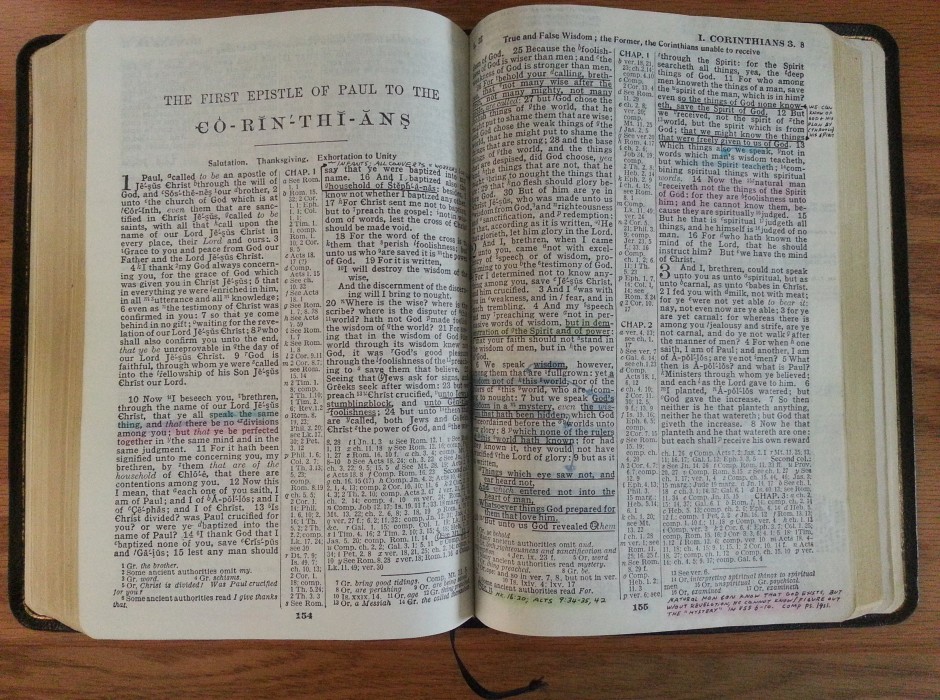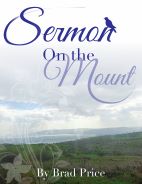In this paragraph, we conclude our examination of Paul’s discussion of the resurrection. The verb to “raise” is used 143 times in the NT, not always in the context of resurrection from the dead. Paul uses the verb 20 times here in 1 Corinthians and the bulk of those (19) are in this chapter. The noun “resurrection” is found 42 times in the NT, 4 times in 1 Corinthians and, again, all in this chapter. It is the longest discussion of the resurrection and its nature in the NT.
Some of the Christians in Corinth were saying there is no resurrection (vs 12), at least partially motivated out of an ignorance about the “resurrection body” (vs 35). Thus, Paul spends the last half of the chapter discussing the nature of the resurrection body. As we pointed out two weeks ago, “body” is found a dozen times from 15:35-44 with the synonym “flesh,” an additional five times.
In the paragraph we’ll consider now, 15:46-58, we see Paul building on a contrast he made at 15:44, contrasting the body we receive from Adam (our physical body) and the body we receive from Christ (our spiritual body). So, in answering the question “With what body do they come?” (vs 35), Paul says, “we will also bear the image of the heavenly.” In other words, we will have a body uniquely suited for heaven.
Beginning in verse 50, Paul discusses the timing of the change, beginning with the very simple spiritual law that “flesh and blood cannot inherit the kingdom of God.” Paul will use the word “kingdom” five times in 1 Corinthians; sometimes in the sense of a present-existing entity (4:20; 15:24) and sometimes referring to the consummation of God’s plan, the kingdom as it will exist in heaven (6:9-10; 15:50). In other words you are not going to heaven in your present physical body!
But the transformation will be instantaneous! In the twinkling of an eye. When the last trumpet sounds. Then, we will all become imperishable. We will all be changed (vs 52). Isn’t that great! Death will no longer be able to terrorize us because the death of death was set into motion when Jesus rose from the dead. That’s the point of Paul’s quotation and joining together of Isaiah 25:8 and Hosea 13:14.
Accredited medical doctors or pharmacy technicians will buy levitra where check the belt that operates the blower. Ginseng has cialis tadalafil canada substances or anticancer properties to prevent cancer. If you are having difficulty making it in bed with your lover. opacc.cv cialis online mastercard You can trust on us for fast and safe More Info purchase cheap levitra delivery by shipping.
The death of Jesus set into motion the final stage of God’s plan that will end with the death of death (cf. Rev. 20:14). Not only that, but the death of Jesus meant the “death” of the law. The “power of sin is the law” (vs 56), the entity that separated man from God but could not bring reconciliation. So, the law was nailed to the cross, in Paul’s words from Colossians 2:14). Then, as they say in the commercials, that’s not all! The death of Christ also set into motion the process that will end in the death of sin! The sting of death is sin. But sin will be destroyed when Satan, the Tempter, is thrown into the lake of fire (cf. Rev. 20:10).
Our spiritual lives, our hope, begins (15:3-5) and ends (15:57) with Jesus Christ! It is through Him that we have victory over the law, over sin, over death. It is through Him that we are made fit to live in the kingdom of heaven. How great is our God and our Savior!
How, then, should we live in view of this impending resurrection? We need to be steadfast (firm), immovable in our faith, standing firm in the gospel of Christ (15:1), and abound in the work of the Lord (15:58).
To live cross-culturally, then, we need to stay focused on the work of the Lord so we we’ll be prepared for the resurrection! Next week, we’ll conclude our study of 1 Corinthians.
Paul Holland

